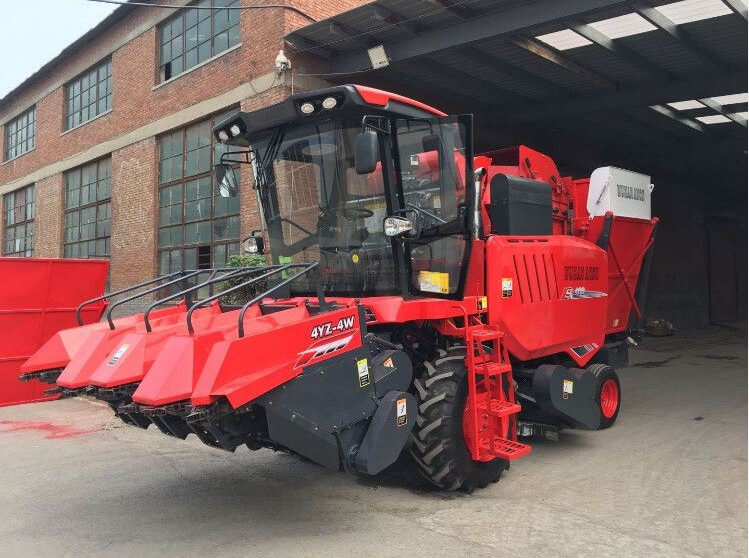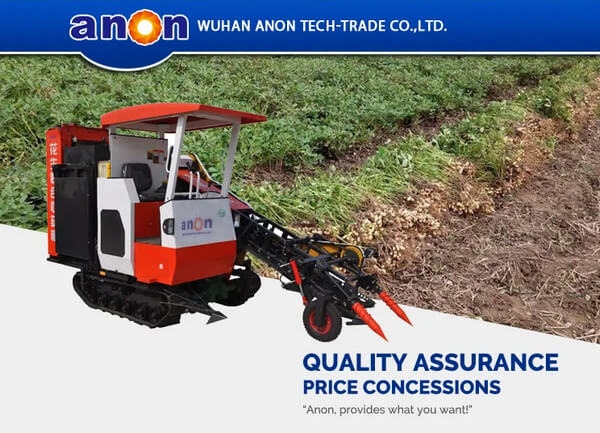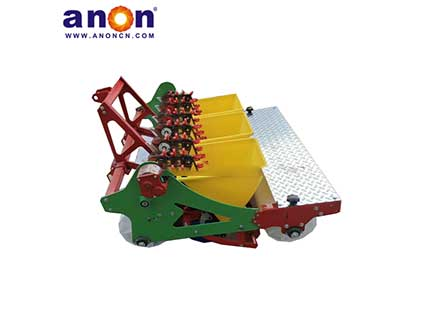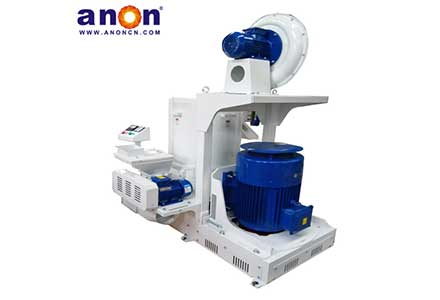Introduction
Are you still struggling to pick cotton under the hot sun, with low labor efficiency? Facing a large cotton field, traditional hand-picking is time-consuming and exhausting. So why not use a more efficient cotton harvester? It can quickly help you harvest cotton, save labor, and boost productivity. In this article, we’ll introduce everything you need to know about cotton harvesters. Let’s take a closer look!
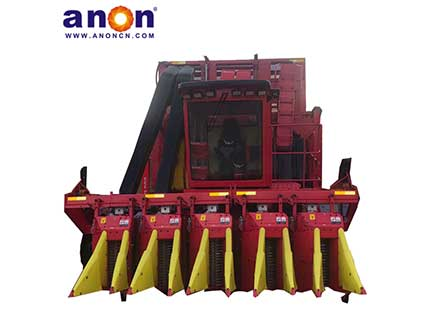
What is a Cotton Picker
A cotton harvester, also known as a cotton picker, is an agricultural machine specially designed for harvesting cotton. It greatly improves the efficiency of cotton collection and helps you pick cotton quickly. During operation, it pulls the cotton from the bolls, collects it, and packs it—completing large-scale harvesting in one go. A cotton harvester not only boosts harvesting efficiency but also reduces labor costs, helping you increase your overall economic returns.

Types of Cotton Harvester
Cotton harvesting machinery is mainly divided into cotton strippers and cotton pickers.
The cotton stripping machine can strip the whole branches, leaves, and cotton balls of cotton plants at once. It uses mechanical devices to pluck cotton bolls from plants, which may mix a large number of branches, twigs, leaves, and all cracked or immature cotton bolls. The structure of the cotton peeler is relatively simple, similar to a large comb that is automatically pulled. The cotton plant needs to pass through many comb teeth, and the plant is rolled horizontally onto the comb. Cotton bolls with a diameter exceeding the teeth will be picked. The cotton peeler is suitable for areas with low requirements for cotton quality, low labor costs, small cotton planting scale, and loose picking time.
Boll strippers are most suitable for regions with lower cotton quality requirements, lower labor costs, smaller planting scales, or more flexible harvesting timeframes.
The cotton picker is currently the most commonly used type of cotton harvesting machine. It selectively harvests only the open cotton bolls, causing minimal damage to the cotton plants. Based on the picking mechanism and the structure of the picking head, cotton pickers can be divided into:
Self-propelled horizontal spindle cotton pickers
In this type, the spindles are arranged horizontally, and their rotation is parallel to the ground. The picking head has a more complex structure. The spindles are mounted on spindle bar tubes, and inside each tube, there’s a bevel gear transmission system that provides the spindle’s rotation. This design allows precise and efficient cotton picking.
Self-propelled vertical spindle cotton pickers
In this type, the spindles are arranged vertically, with their rotation axis perpendicular to the ground. The structure is simpler compared to the horizontal type. However, the design and layout of the picking components are different to suit the vertical picking motion.
Both types offer selective harvesting and are widely used in large-scale, modern cotton farming to improve picking efficiency and reduce labor costs.
How Does a Cotton Picker Work
Our ANON cotton picking machine uses a horizontal spindle design. This type of cotton picking machine has a 96% picking efficiency and a lower trash content, about 10%, compared to vertical spindle pickers.
The main structure of the horizontal spindle cotton picker includes the cotton picking head, chassis, engine, electrical system, hydraulic system, cabin, control system, pneumatic cotton transport system, and cotton box. The most important parts are the cotton-picking head and the pneumatic cotton transport system.
Cotton Picking Head
Divider: It gathers the cotton plants into the drum and can also lift fallen cotton plants.
Cotton-picking drum: The drum is the key component of a level spindle-type cotton picking machine. Many grooved conical spindles are installed vertically on the cotton-picking drum. These spindles are called “picking spindles.”
Cotton separation disk assembly: This is made up of several separation disks, each with grooves that help remove the cotton from the picking spindles.
Pneumatic Cotton Conveying System
Fan: The fan creates airflow, which helps transport the cotton to the cotton box.
Hydraulic clutch: It controls the fan’s drive, ensuring it works steadily and reliably.
How a Cotton Picker Works
Step1
First, as you slowly drive the cotton-picking machine into the field of mature cotton, align the row divider with each row of cotton. The row divider at the front of the machine accurately gathers the cotton into the drum, preventing waste and helping to increase cotton yield.
Step2
When the cotton enters the cotton-picking drum, as I mentioned before, the conical picking spindles on the drum pull the cotton out of its bolls. These spindles rotate as the drum turns, effectively inserting into the cotton and pulling it out of the bolls. The debolled cotton then rotates inward with the spindles.
Step3
When the cotton on the picking spindle rotates into the cotton picking machine, it will hit the separation disks. The cotton separation disks move in the opposite direction of the cotton-picking drum, allowing the cotton to fall off the spindles.
Step4
The fallen cotton is blown to the cotton bin by the airflow created by the fan in the pneumatic cotton transport system. Our ANON cotton picking machine is also equipped with a baler. When the collected cotton fills the cotton bin, it is sent to the round baler. The round baler compresses the incoming cotton, wraps it in protective film, and then cuts it off, so people do not need to re-bale it.
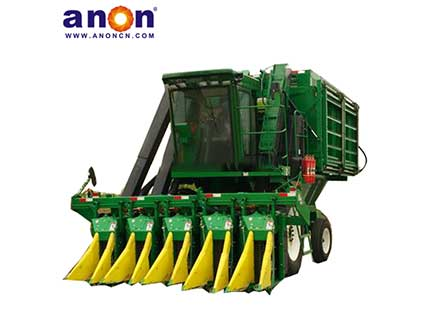
The Advantages of the Cotton Picker
Using a cotton picking machine to harvest cotton has many benefits, such as increased efficiency, saving labor and resources, and reducing the cost of picking cotton. It can also help you make money by using the cotton-picking machine for harvesting.
Increased Efficiency
The efficiency of a cotton picker is much higher than manual picking. Even skilled cotton pickers can only collect up to 80 kilograms of cotton in a day. In contrast, our ANON six-row cotton picker can do the work of 1,200 cotton pickers in one day.
Improve the Quality of Harvest
Cotton harvesters are specifically designed to gently extract cotton from plants while minimizing damage to the cotton itself, resulting in less pollution and higher quality cotton.
Save Manpower and Resources
During the cotton harvest season, it can be hard to find enough workers, and labor costs often go up because of the busy farming season. If you use a cotton-picking machine, you won’t have to worry about this. It saves a lot of physical effort that would be spent on manual picking. Plus, the harvested cotton gets packed inside the machine, so you don’t have to pack it yourself, saving both manpower and resources.
When you choose to use a cotton-picking machine, you only need one person to sit in the cabin to operate it. There’s no need for manual picking, which requires standing for long periods and doing repetitive work. Plus, you can harvest cotton in any kind of weather, making it very convenient.
Save Cost
Although buying a cotton-picking machine requires some investment, it’s a smart choice in the long run. Whether you’re harvesting your cotton or helping others for profit, it’s worth considering.
Tips for Improving the Cotton Output
When using a cotton picking machine, you probably want to know how to pick more cotton. I have a few tips that can help you increase your cotton yield while using the machine.
Tip 1
Before driving a cotton-picking machine, you need to process the cotton first, such as spraying defoliants and ripening agents on it. It is recommended that the defoliation rate of the cotton reach 90% and the boll opening rate reach more than 95% before harvesting. It is recommended to wait for about 20 days after the defoliation rate is reached before picking. This will not only help you pick more cotton but also reduce the impurity content in the cotton.
Tip2
Once the cotton is ready, you can start picking. Plan the best route for the harvester and keep it moving in a straight line. When turning, stop the machine to avoid damaging the unpicked cotton plants.
Tip3
You should adjust the harvester’s speed based on the density, height, and moisture of the cotton plants. This way, you can make sure to pick as much cotton as possible and reduce missed spots and jams, which will increase your cotton yield.
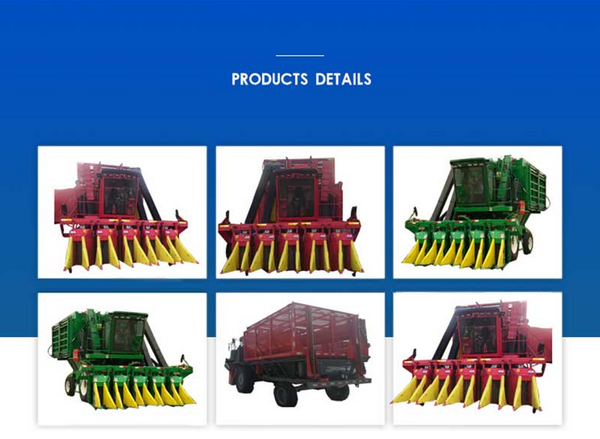
Maintenance of the Cotton Picker
The structure of the cotton harvester is complex, and systematic measures need to be taken, including daily inspection, cleaning and maintenance, parts replacement, and safe operation.
Cleaning and maintenance
After working for a long time, the cotton harvester will accumulate dust and impurities, so the machine should be cleaned thoroughly regularly. First, open all the inspection hole covers of the machine, remove all protective covers, transmission chains, belts, cutters, screens and other parts, remove the remaining debris in the drum room and bridge, as well as the straw, weeds and soil on the cutting platform, driving platform, cleaning room bottom shell, fan volute inside and outside, gearbox outside, etc. The outside of the machine can be cleaned with pressurized water.
Parts maintenance and replacement
Regularly check the condition of parts, perform maintenance, and make replacements. Pay special attention to some parts that are easy to wear and deform, such as springs and tapes, and replace them immediately if they are damaged or severely deformed. For adjusting bolts, clutch claws, etc., apply engine oil for corrosion protection. The harvester has been exposed to wind, sun, collision, etc., for a long time, so it is also necessary to paint or spray paint in time for corrosion protection.
Troubleshooting
If a cotton harvester malfunctions, stop the machine immediately. Carefully inspect each component to determine the nature and extent of the problem. Refer to the user manual when necessary, or contact a professional technician for diagnosis and repair.
Storage and Maintenance
When storing the harvester, make sure it is thoroughly cleaned. Release all tension springs to prevent compression fatigue and ensure that all hydraulic cylinders are in their non-working (retracted) position. Remove all belts, wipe them clean, inspect for damage, label their positions, apply talcum powder, and store them in a cool, well-ventilated area. Store the battery indoors and keep it charged; in winter, ensure it is properly insulated against freezing. Take fire safety precautions in the storage area. Once a month, add a small amount of engine oil to each cylinder, rotate the crankshaft one to two times, and operate each hydraulic lever several times to maintain system flexibility.
How to Choose the Cotton Picker?
If you’ve seen our website, you’ll know that, unlike many foreign models that usually have six rows, our ANON cotton picking machines come in three-row, five-row, and six-row options for you to choose from.
If your land is not a large flat area, you can choose a three-row cotton harvester. The three-row model is more flexible and balances efficiency with cost.
The five-row and six-row cotton picking machines are more efficient than the three-row models. They are suitable for larger fields and can handle big jobs at once. You can choose based on the actual size of your land.
Conclusion
After the above introduction, I believe you should understand how important cotton picking machines are for agriculture. If you’re thinking about buying a cotton harvester, feel free to contact us anytime. We will provide you with high-quality machines and services.
FAQ
How can I reduce impurities in cotton while using a cotton picker?
Besides spraying defoliants on the cotton, as I mentioned, you also need to regularly check the machine. Make sure to inspect the filters and cotton boxes regularly, as this can help you reduce impurities when using the cotton picking machine.
How to reduce the impurity rate of cotton?
Before the operation, weeds, straw, and other debris can be cleared in the field. Regularly check whether the cleaning screen is damaged and replace it in time; Avoid operation in wet weather to reduce soil adhesion.
How hard is cotton picking?
Picking cotton is hard work, and in some countries it is considered a punishment. Continuous work in the cotton fields can lead to scratches, bruises, and even pesticide poisoning.
How much cotton can one person pick in a day?
How much cotton a person can pick in a day depends on age, height, physical strength, picking method, and even luck – whether a man or a woman can pick 300 pounds (about 130 kilograms) a day, it is considered good.


